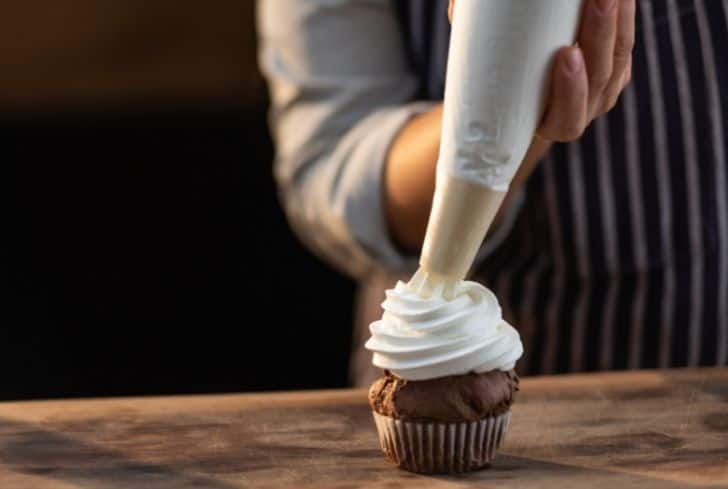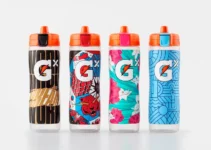Whipped creams are a great way to start a good day; you could melt them on a hot coffee or other beverages. They are super easy to make, and the canned ones make it even more accessible when you feel too lazy to make them yourself. Like most packaged products, whipped creams are packaged in airtight cans.
Aerosol cans, to be precise which are composed of steel and aluminum. They are excellent recyclable materials. However, it is not the only reason it is ideal for packaging. They are also used for their environmental benefits, such as reducing emissions and maintaining the purity of groundwater.
So, in this blog post, we will discuss how you can recycle whipped cream cans and tips to properly dispose of these cans and everything else you might want to know about the delicious whipped creams, especially after consumption. Dive right in!
Are Whipped Cream Cans Recyclable?
Usually, we do not give much thought to recycling our plastic and cans, and we’d generally toss it out in the waste bin after consuming the content in the can, but do you ever wonder if whipped cream cans are recyclable?
Yes, they are. You can recycle whipped cream cans. They come in aerosol cans, which can be recycled safely with other metal packagings in your home.
These aerosols are not only used in packaging whipped creams; they are used in packaging various products all over your home. For instance, deodorant, spray paint, air freshener, etc.
Thus, they are available all around your household in the bathroom, kitchen, garage, anywhere you can think of.
Although aerosols have their benefits, they have their disadvantages, just like everything else, and could be very dangerous to our health if not properly disposed of for recycling.
Are Whipped Cream Chargers Recyclable?
A whipped cream charger, also known as whippets, are non-aerosol recyclable steel cartridges filled with nitrous oxide gases. They are recyclable and used to create whipped cream for beverages and dessert toppings. They are also used in culinary applications and are excellent for creating cocktail foams.
Whippets are generally accepted by many and found in the household as kitchen equipment. Even though we know whipped cream chargers are recyclable, what are the proper steps of disposing of them for recycling? Let’s take a quick look.
The first step is to ensure that they are empty. Ensuring that your whipped cream chargers are entirely used up is essential. It would be best if you did not dispose of an unused cartridge.
Before disposing of whipped cream chargers, you should ensure that there is no more gas left in them, and you can confirm if there is any gas left by running it under water to force out any extra or leftover gas.
Next is to store together empty cartridges for disposal. Once you have used and confirmed that a whipped cream charger is ultimately used up, they should be kept together so you don’t lose them accidentally. Ensure you discard the whipped cream chargers together alongside their package when you are ready.
Finally, dispose of it properly. Cream chargers might not be accepted for disposal, depending on your recycling program or municipality. In such cases, you can dispose of them at a metal scrap yard for recycling after confirming that it is empty to avoid explosion and harmful ingestion of released chemicals.
Can You Freeze Whipped Creams?
Yes, you can freeze whipped cream. Do you have leftover whipped creams and wondering how to store them? You do not have to worry. You can freeze your whipped cream and use it when you need it.
However, freezing whipped cream is not as easy as grabbing a container, dumping the whole leftover inside, and putting the bowl in the freezer. You have to know how to freeze your whipped cream appropriately depending on whether you stabilize your whipped cream or not.
To get an excellent result after freezing your whipped cream, you have to either store it in mounds or stabilize the whipped cream.
The stabilizer is needed to avoid your whipped cream puffing up or losing its texture. There are several stabilization methods you can use to avoid this bad result.
Generally, you can purchase commercial stabilizers at stores for this purpose. You can also use homemade ingredients such as corn starch, pudding mix, and unflavored gelatin to stabilize your whipped cream.
When planning to freeze and store your whipped cream, you can line a baking sheet with parchment paper and spoon or pipe your unstabilized whipped cream on top of the parchment paper in small mounds. Then place in the freezer and freeze overnight.
Once it is frozen, you can transfer the frozen dollops to another freezer container. Here is an excellent option for single servings and can be served on a hot beverage or dessert by placing dollops of frozen whipped cream directly on it.
On the other hand, a stabilized whipped cream can be transferred directly into an airtight container and freeze instantly. Regardless, it is essential to note that whipped cream should not be left open in the air for too long because it can begin to lose some of its flavors.
Can You Make Whipped Cream With Milk?
The significant difference between heavy cream and whole milk is the different fat content. Whole milk contains 3.2% fat content, while heavy cream has 36% fat content. Thus, rather than heavy cream, you can make whipped cream with regular milk.
The fat level gives whipped cream that stabilized texture that we all love. Hence, to provide whole milk with the same consistency and stability. Some ingredients are needed to be added to thicken the whipped cream gotten from milk. Let’s look at the steps to make whipped cream from milk instead of cream.
Add 60ml cup of cold milk to a bowl. Cold milk is needed because it is most likely not to curdle.
Add gelatin to the cold milk to thicken it and help maintain the volume of the milk when it is whipped. For about 4 ounces of milk, it is recommended to use three teaspoons of gelatin. Let it sit for about 5 minutes until it forms a sponge.
Once the liquid is spongy, place it into the microwave for about 20 seconds or set aside until the mixture becomes liquid. Stir and set to cool.
Afterward, pour a cup of milk into a large bowl, mix with sugar, and then stir.
Pour in the set-aside gelatin mix and whisk together. After whisking, place the combined mixture into the fridge.
Remove the mix after 20 minutes and combine it with a whisk or electric mixer until it thickens, rises, and forms soft peaks. Do not over mix, or your mixture will become grainy and sticky.
Store into the fridge and use within two days.
The only downside of whipped cream made from milk is that it does not freeze and might not last beyond 48 hours still if you are craving whipped milk and do not have access to getting a canned one or heavy cream. Your regular whole milk will work out just fine.
How Do You Dispose of Whipped Cream Cans?
Even though whipped cream is not a hazardous product, your recycling program wouldn’t accept it, so ensure you always confirm its can is empty before disposal. If it isn’t, you can either empty the can first or give it out, but you should never throw a whipped cream container into your trash if it is not empty.
By now, you shouldn’t doubt that aerosol cans are found extensively in our households, and recycling facilities can recycle them, but how can they be disposed of properly for recycling.
Let’s look at some tips to help you properly dispose of your whipped cream cans.
1. Dispose of Plastic and Metal Separately
Whipped cream containers come with plastic covers. They cannot be recycled together with the metal cans; hence, when throwing out a whipped cream container, the first process is to separate the plastic and metal then dispose of them appropriately.
2. Ensure the Can is Empty
You should ask yourself before disposing of your whipped cream can or any aerosol can in your home if it is empty or not.
If your answer is no and there is still some substance left in the container, you can either decide to completely exhaust the product in the container or give it out. Note that the container is empty before recycling because an aerosol container containing some content creates more waste.
It is also hazardous to the environment and the handler of the disposed cans because aerosol cans with products left in them are still pressurized and could explode when punctured or crushed.
Such an instance is not only a dangerous situation for a trash sorter, but it can also cause them great harm. Thus, be thoroughly sure that your whipped cream can is empty before disposal in the waste bin.
3. Do Not Depressurize the Can Yourself
It would be best if you never depressurize whipped cream cans by yourself. It is dangerous due to the release of chemicals such as nitrous oxides. Reliable sources say that explosion of whipped cream containers has caused death and injuries to several in different parts of the world.
So, trying to depressurize the can yourself is putting not only your health but your life at risk. There are many methods recycling facilities can safely depressurize the can and recycle appropriately.
Hence, the only effort you should put into recycling a whipped cream can is to dispose of it properly after confirming it is empty.
4. Do Not Remove the Nozzle
Although, the first tip given was to separate the plastic from metal for proper recycling. The nozzle of your whipped cream can not be tampered with because doing so can lead the whipped cream container to explode or burst.
5. Dispose of Them in the Right Bin
Don’t just assume the can goes into the trash; you have to ask if your recycling program accepts the can, exactly where they do, and their color sort. For instance, if can goes into the blue bin or not?
Regardless, it is essential to note that whipped cream cans are recyclable and reusable but must be disposed of properly to avoid accidents that may put you and trash sorters at risk.
Conclusion
Whipped creams are fantastic, and we all love them because it takes our beverages and dessert to the next level. However, suppose you use a purchased one rather than a homemade one.
In that case, it is vital to take the disposal of the cans seriously to ensure proper recycling and reduce environmental pollution that can happen due to the release of chemicals during the combustion of whipped cream cans.






